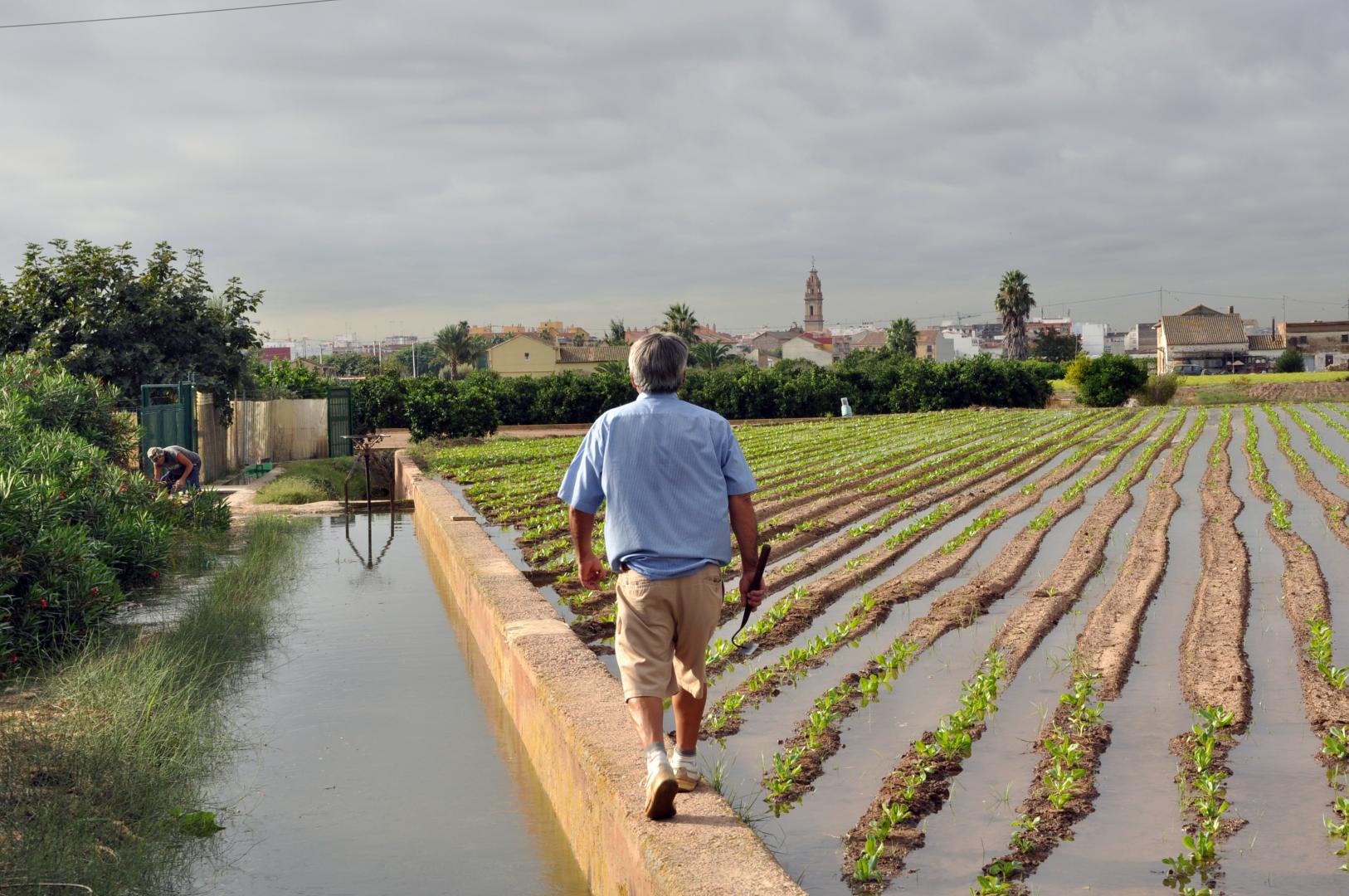
Historical Irrigation System at l'Horta de València, Spain
A Globally Important Agricultural Heritage System (GIAHS)
Urban Agricultural Heritage and GIAHS:
When we consider Urban Agriculture, we generally either think about community gardens or “hi tech” approaches such as vertical farming or rooftop gardening. However, UA also can also provide important cultural heritage benefits.
Such, often neglected, aspects of UA are recognised through the concept of Globally Important Agricultural Heritage Systems (GIAHS), which are very distinct from conventional heritage sites or protected landscapes. A GIAHS is a living, evolving system of human communities in an intricate relationship with their territory, cultural or agricultural landscape or biophysical and wider social environment:
https://www.fao.org/giahs/background/en/
Background to the L’Horta waterscape in Valencia:
L’Horta Valacenia is an excellent example of a Globally Important Agricultural Heritage System (GIAHS), within a European UA context. This unique waterscape evolved from ancient irrigation systems which were created during the L’Horta region’s Islamic past. The agricultural system provides healthy food products and economic sustenance to local communities and is the fascinating result of cultural adaptation to climatic and geographic features.
Remarkably, L’Horta has survived in a relatively densely populated coastal region, despite potential development pressures. The unique features of the irrigation system have contributed to reducing water scarcity and to making fruit and vegetable cultivation viable within a relatively arid climatic zone. The complex cultural landscape consists of irrigation channels, drainage ditches, farm buildings (and other vernacular structures) and complex mosaics of crops.
Such peri-urban agricultural areas provide important environmental, agricultural and cultural benefits, along with creating a strong sense of local identity, thereby contributing to the region’s overall quality of life. For example, the high agro-biodiversity is illustrated through the presence of 50 different crops.
The crop diversity results from the high number of indigenous varieties and from the landscape heterogeneity, which is divided into very small plots, thereby ensuring ecosystem resilience. The unique landscape of L’Horta de Valencia also provides many diverse habitats for plants and animals through incorporating numerous field boundary features; these include hedges, small trees and other natural structures which offer food sources, nesting locations and protection from predators.
The unique irrigation systems which characterise the L’Horta landscape, provide a sustainable alternative to contemporary land management approaches. These systems are strongly influenced by traditional governance methodologies and constitute a unique form social organization. This ensures effective sharing of water resources, thus allowing equitable and continuous availability of water to each farmer throughout the year.
Sustainable Development Potential of L’Horta Valencia :
GIAHS and other locally significant heritage landscapes such as L’Horta Valacenia, are invaluable in their own right from the perspective of preserving unique landscapes, traditional knowledge and agrobiodiversity. However, such areas must not be merely considered as fossilised landscapes which are frozen in time, but as real opportunities for promoting sustainable development. The potential and opportunities which exist include the following:
-
Expansion of the circular economy principles which are embedded at the heart of such systems.
-
Knowledge exchange to spread and continue indigenous practices which have developed over hundreds of years, in tune with local conditions.
-
Development of local branding initiatives, particularly for high value, niche products.
-
Culturally orientated “slow” tourism, focusing upon appreciation of local landscapes and nature, quality food, wellbeing, local context and storytelling. This can directly benefit local businesses, creating inward investment.
With an ever-increasing interest in local products, there is considerable potential to promote a strong brand based on authenticity and regional character. In this respect local systems should also be responsive to new consumer trends, technologies and ideas. This will ensure resilience and continuity of the landscape, it’s diversity and sustainable governance in the longer term.
* All photos in this page: FAO GIAHS




